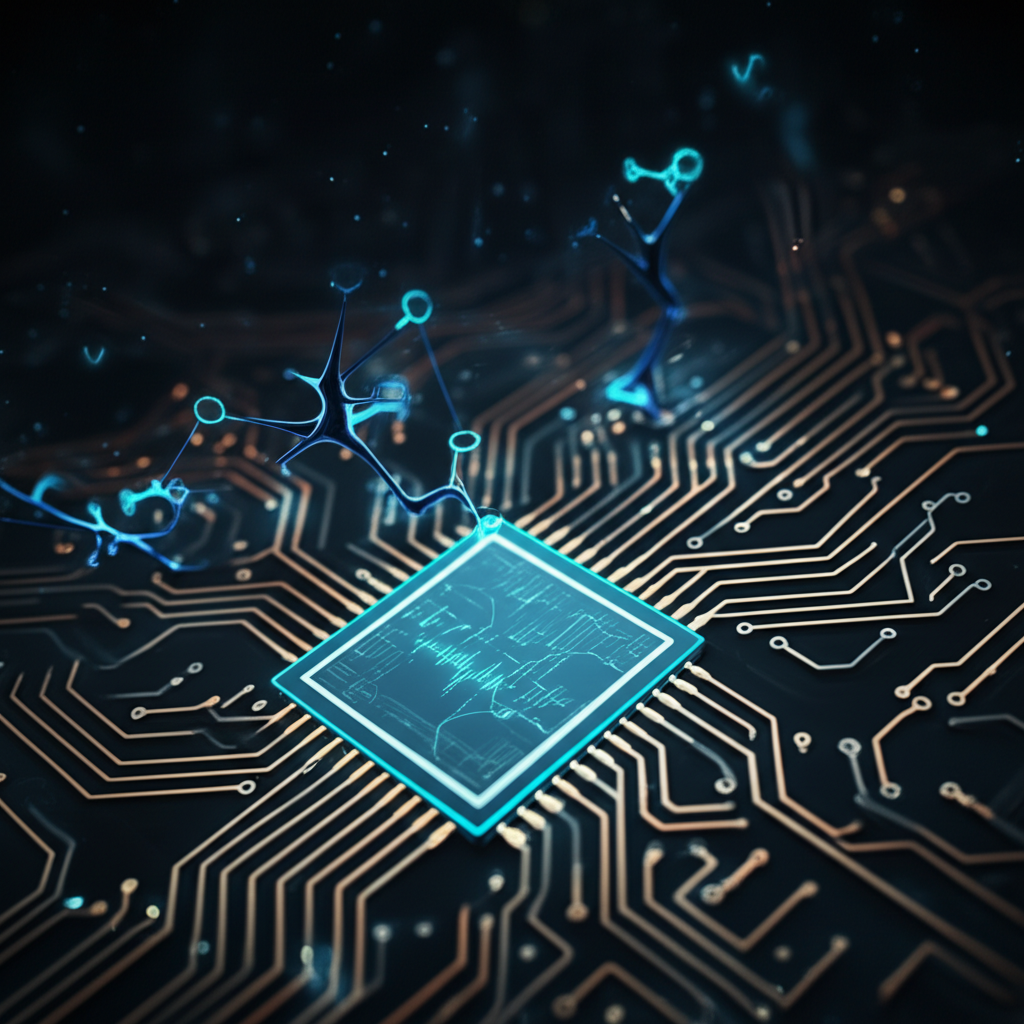Blog
AI in Electrical Engineering: A Complete Tutorial

Welcome to this comprehensive tutorial on the fascinating integration of Artificial Intelligence (AI) within the field of Electrical Engineering! Whether you’re a seasoned electrical engineer, a curious student, or simply someone keen to understand how AI is revolutionising our world, this guide is for you. We’ll explore the fundamental concepts, practical applications, and the exciting future of this powerful synergy.
Introduction: The Dawn of a New Era
Electrical engineering has always been at the forefront of innovation, powering our homes, industries, and communication networks. From the humble light bulb to complex microprocessors, electrical engineers design, develop, and maintain the very infrastructure of modern life.
However, as systems become increasingly intricate, data-rich, and dynamic, traditional analytical methods sometimes fall short. This is where Artificial Intelligence steps in. AI, in essence, equips machines with the ability to learn, reason, and solve problems much like humans do. Its integration into electrical engineering isn’t just an improvement; it’s a paradigm shift, enabling unprecedented levels of efficiency, reliability, and intelligence in electrical systems.
For the General Audience: Imagine your home’s energy system learning your habits and optimising power consumption to save you money, or a power grid that can predict and prevent blackouts before they even happen. That’s the power of AI in electrical engineering.
For the Technical Audience: We’re moving beyond conventional control systems and deterministic models to embrace data-driven approaches, predictive analytics, and adaptive optimisation, leading to more robust and resilient electrical infrastructure.
Chapter 1: Demystifying AI – The Fundamentals
Before we delve into specific applications, let’s establish a common understanding of what AI truly is.
What is Artificial Intelligence?
AI is a broad field of computer science that focuses on creating intelligent machines that can perform tasks that typically require human intelligence. This includes learning from experience, understanding natural language, recognising patterns, making decisions, and solving problems.
Key Branches of AI Relevant to Electrical Engineering:
- Machine Learning (ML): This is the most common and practical branch of AI. ML algorithms allow computers to learn from data without being explicitly programmed. Instead of writing rules for every possible scenario, you feed the algorithm vast amounts of data, and it discovers patterns and relationships on its own.
- Supervised Learning: Learning from labelled data (e.g., historical power consumption with corresponding weather data).
- Unsupervised Learning: Finding patterns in unlabelled data (e.g., identifying clusters of similar load profiles).
- Reinforcement Learning (RL): Learning through trial and error, where an agent learns to make decisions in an environment to maximise a reward (e.g., an autonomous energy management system optimising power flow).
- Deep Learning (DL): A subfield of ML that uses artificial neural networks with multiple layers (hence “deep”) to learn complex patterns from large datasets. DL is particularly powerful for tasks like image recognition, natural language processing, and anomaly detection.
- Expert Systems: Early AI systems that used rule-based reasoning to mimic human expert decision-making. While less prevalent in modern AI research, they still have niche applications.
- Fuzzy Logic: A form of logic that deals with approximate reasoning rather than precise binary (true/false) logic. Useful in control systems where precise mathematical models are difficult to obtain or where human-like reasoning is desired.
Why is AI Gaining Traction Now?
- Vast Amounts of Data (Big Data): Electrical systems generate enormous amounts of data (sensor readings, smart meter data, grid performance data). AI thrives on this data.
- Increased Computational Power: Modern processors (especially GPUs) can handle the intensive computations required for complex AI algorithms.
- Improved Algorithms: Significant advancements in AI algorithms, particularly in deep learning, have made them more effective and versatile.
Chapter 2: AI’s Footprint in Electrical Engineering – Key Applications
Now, let’s explore the exciting ways AI is being applied across various domains of electrical engineering.
1. Smart Grids and Power Systems
The electricity grid is undergoing a massive transformation from a traditional, centralised system to a decentralised, intelligent “smart grid.” AI is the driving force behind this evolution.
- Load Forecasting: Predicting electricity demand is crucial for efficient grid operation. AI models (e.g., neural networks, support vector machines) can analyse historical consumption, weather patterns, economic indicators, and social events to provide highly accurate forecasts, reducing wasted energy and improving reliability.
- General Audience: Imagine a weather forecast, but for electricity! AI helps predict how much power we’ll all need, so the power companies can make sure there’s enough.
- Technical Audience: Advanced time-series forecasting models, incorporating exogenous variables and deep learning architectures (e.g., LSTMs), are significantly outperforming traditional statistical methods.
- Renewable Energy Integration: Solar and wind power are intermittent sources. AI helps predict their output based on weather forecasts and historical data, enabling better integration into the grid and reducing the need for traditional “spinning reserves.”
- General Audience: AI helps the power grid “understand” when the sun will shine and the wind will blow, so we can use more clean energy.
- Fault Detection and Diagnosis: AI algorithms can quickly identify anomalies and faults in the power grid (e.g., power line breaks, equipment malfunctions) by analysing real-time sensor data, minimising downtime and improving safety.
- General Audience: If something goes wrong with the power lines, AI can spot it super fast, like a smart detective for electricity.
- Optimised Grid Operation and Control: AI-powered systems can optimise power flow, voltage regulation, and reactive power compensation, improving efficiency and stability. Reinforcement learning can enable autonomous decision-making in complex grid environments.
- Technical Audience: Multi-agent reinforcement learning and decentralised control strategies are being explored for real-time optimisation of microgrids and distribution networks.
- Cybersecurity: AI can detect and respond to cyber threats in critical infrastructure, identifying unusual network activity that might indicate an attack.
2. Power Electronics and Drives
Power electronics convert and control electrical energy, found in everything from phone chargers to electric vehicles. AI is enhancing their performance and reliability.
- Predictive Maintenance: AI algorithms can analyse data from power electronic converters (e.g., temperature, current, voltage) to predict potential failures before they occur, allowing for proactive maintenance and preventing costly breakdowns.
- General Audience: AI can tell us when a part in an electric car or a power supply might break before it actually does, saving us hassle and money.
- Optimised Control: AI can develop adaptive control strategies for power converters, improving efficiency, reducing harmonic distortion, and enhancing transient response. Fuzzy logic and neural networks are often employed here.
- Technical Audience: Model predictive control (MPC) combined with AI techniques can improve the dynamic performance and robustness of power converters under varying load conditions.
- Design Optimisation: AI can be used to explore vast design spaces for power electronic circuits, identifying optimal component selections and topologies based on performance criteria (e.g., efficiency, size, cost).
3. Electric Machines and Drives
From industrial motors to electric vehicle powertrains, electric machines are fundamental. AI is making them smarter and more efficient.
- Fault Diagnosis in Motors: AI can detect subtle signs of wear and tear or impending faults in electric motors by analysing vibration, current, and temperature data, preventing catastrophic failures and optimising maintenance schedules.
- General Audience: AI can “listen” to a motor and tell if it’s getting sick, so we can fix it before it breaks down completely.
- Optimised Motor Control: AI can develop advanced control algorithms for electric motors, leading to improved efficiency, smoother operation, and extended lifespan, especially in variable-speed applications.
- Design and Material Optimisation: AI-driven simulations can explore novel designs and materials for electric machines, leading to lighter, more powerful, and more efficient motors.
4. Robotics and Automation
Electrical engineers design the electrical systems, sensors, and actuators for robots. AI is the “brain” that makes them intelligent.
- Path Planning and Navigation: AI algorithms enable robots to navigate complex environments, avoid obstacles, and plan optimal paths.
- Human-Robot Interaction: AI allows robots to understand human commands (voice, gestures) and interact more naturally.
- Predictive Maintenance of Robotic Systems: Similar to other electrical systems, AI can predict failures in robotic components, ensuring continuous operation in manufacturing and other industries.
5. Communications and Signal Processing
AI is fundamentally changing how we process and transmit information.
- 5G and Beyond: AI is crucial for optimising network resource allocation, managing complex antenna systems (MIMO), and enhancing signal quality in next-generation communication networks.
- General Audience: AI helps your phone get a faster, more reliable signal, especially in crowded areas.
- Image and Speech Recognition: Electrical engineers design the hardware for these systems, while AI provides the intelligence for interpretation and analysis.
- Adaptive Filtering: AI algorithms can be used to design adaptive filters that remove noise and interference from signals more effectively.
6. Healthcare and Biomedical Engineering
Electrical engineers develop medical devices and imaging systems. AI is enhancing their capabilities.
- Medical Imaging Analysis: AI can assist in diagnosing diseases by analysing X-rays, MRIs, and CT scans, identifying subtle patterns that human eyes might miss.
- Prosthetics and Wearable Devices: AI enables more intuitive and responsive control of advanced prosthetics and can analyse data from wearable health monitors to provide personalised insights.
Chapter 3: Getting Started with AI in Electrical Engineering – Your Toolkit
Ready to dive in? Here’s a guide to the essential tools and skills you’ll need.
Essential Skills:
- Strong Foundation in Electrical Engineering: You need to understand the systems you’re applying AI to. Concepts like circuit theory, power systems analysis, control systems, and signal processing are paramount.
- Mathematics: Linear algebra, calculus, probability, and statistics are the bedrock of most AI algorithms.
- Programming: Python is the de facto language for AI and machine learning due to its extensive libraries and active community.
- Data Science Fundamentals: Understanding data collection, cleaning, pre-processing, and visualisation is crucial for successful AI projects.
Key Software and Libraries (Python):
- NumPy: Fundamental package for numerical computation in Python.
- Pandas: For data manipulation and analysis.
- Scikit-learn: A widely used machine learning library with various algorithms for classification, regression, clustering, etc.
- TensorFlow / Keras: Powerful open-source libraries for deep learning. Keras provides a high-level API, making TensorFlow easier to use.
- PyTorch: Another popular open-source deep learning framework, particularly favoured in research.
- Matplotlib / Seaborn: For data visualisation.
Learning Resources:
- Online Courses (MOOCs): Coursera, edX, Udacity offer excellent courses from top universities (e.g., Andrew Ng’s Machine Learning course).
- Books: Numerous textbooks are available on machine learning, deep learning, and AI in power systems.
- Academic Papers and Journals: Stay updated with the latest research in your specific area of interest.
- Open-Source Projects: Contribute to or learn from existing AI projects on GitHub.
- Conferences and Workshops: Attend industry and academic events to network and learn about cutting-edge developments.
Chapter 4: Challenges and Ethical Considerations
While the potential of AI in electrical engineering is immense, it’s important to acknowledge the challenges and ethical implications.
Technical Challenges:
- Data Quality and Availability: AI models are only as good as the data they’re trained on. Obtaining large, clean, and representative datasets for electrical systems can be challenging.
- Interpretability (Explainable AI – XAI): Deep learning models can be “black boxes,” making it difficult to understand why they make certain decisions. In critical infrastructure like power grids, this lack of transparency can be a concern.
- Real-time Performance: Many electrical engineering applications require real-time decision-making, which can be computationally demanding for complex AI models.
- System Integration: Integrating AI models into existing legacy electrical infrastructure can be complex.
- Computational Resources: Training large deep learning models requires significant computational power, often involving specialised hardware (GPUs, TPUs).
Ethical and Societal Considerations:
- Job Displacement: Automation powered by AI might lead to some job displacement in traditional roles, though new roles will also emerge.
- Bias in Data: If AI models are trained on biased data, they can perpetuate or even amplify existing biases, leading to unfair or suboptimal outcomes.
- Security and Robustness: AI systems can be vulnerable to adversarial attacks, where subtle perturbations to input data can lead to incorrect decisions. This is a significant concern for critical infrastructure.
- Accountability: Who is responsible when an AI-powered system makes a mistake that leads to a power outage or a safety incident?
- Privacy: The collection of vast amounts of data (e.g., smart meter data) raises privacy concerns.
Addressing these challenges requires a multidisciplinary approach, involving engineers, computer scientists, policymakers, and ethicists.
Chapter 5: The Future of AI in Electrical Engineering
The journey has only just begun. The future of AI in electrical engineering promises even more groundbreaking advancements.
- Autonomous Power Grids: Imagine a grid that can largely manage itself, responding to changes in demand and supply, optimising energy flow, and self-healing after disruptions, all with minimal human intervention.
- Hyper-Efficient Electrical Devices: AI will drive the design of materials and components for next-generation electrical devices, leading to unprecedented levels of energy efficiency and performance.
- Personalised Energy Management: AI will enable highly personalised energy solutions for homes and businesses, optimising consumption, generation, and storage based on individual needs and real-time conditions.
- Advanced Robotics for Infrastructure Maintenance: Robots powered by AI will perform inspections, maintenance, and even repair tasks on critical electrical infrastructure in dangerous or remote environments.
- Quantum Computing for Electrical Engineering: While still in its early stages, quantum computing could eventually tackle optimisation problems in power systems that are currently intractable for classical computers.
Conclusion: Powering the Future with Intelligence
The convergence of AI and Electrical Engineering is not just a trend; it’s a fundamental shift that will redefine how we generate, transmit, distribute, and consume electricity. From enhancing grid stability to accelerating the adoption of renewable energy, AI is empowering electrical engineers to build a more efficient, reliable, and sustainable future.
Embrace this exciting field. Learn the fundamentals, experiment with the tools, and contribute to the innovations that will power the world of tomorrow. The opportunities are boundless, and the impact will be profound. Good luck on your AI in Electrical Engineering journey!








